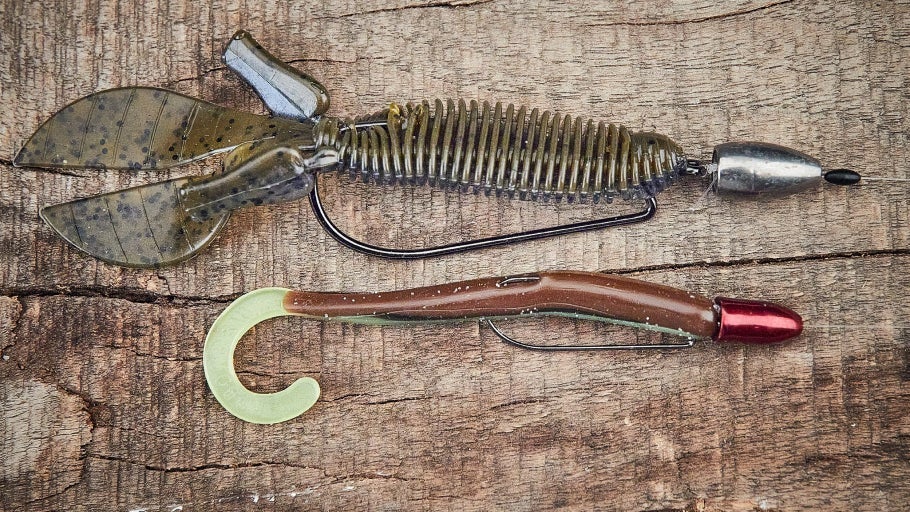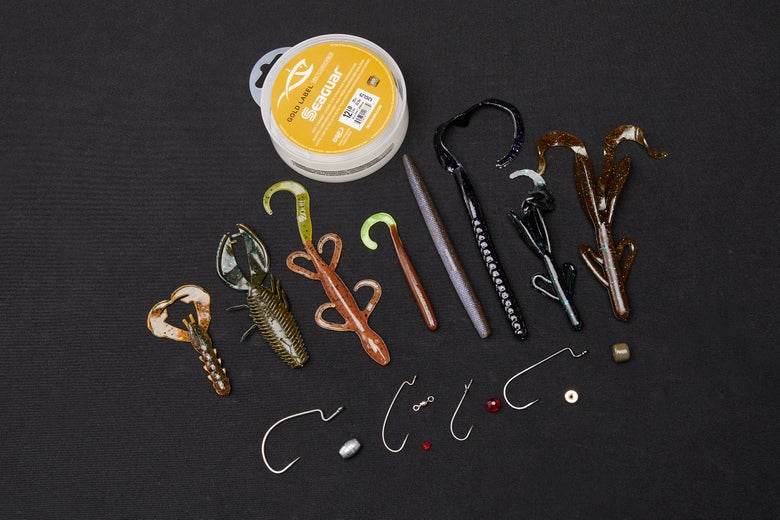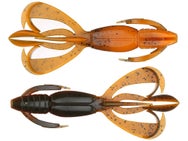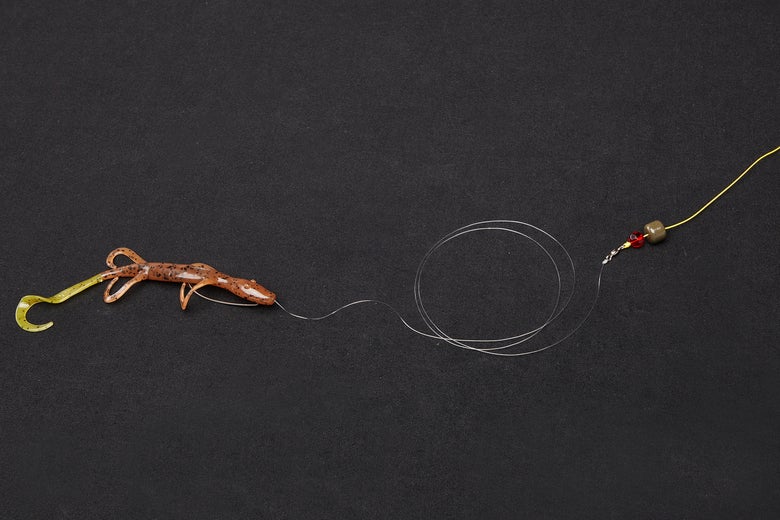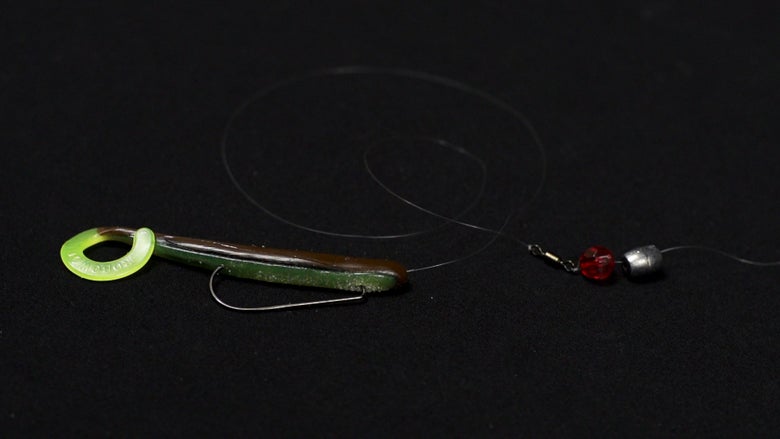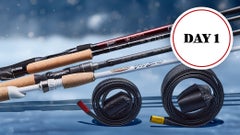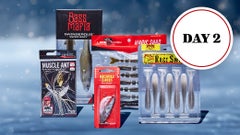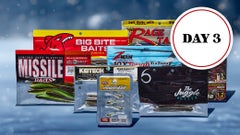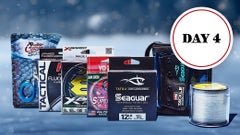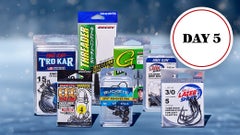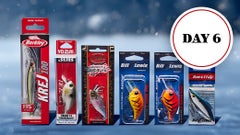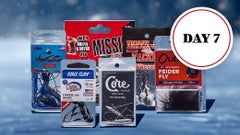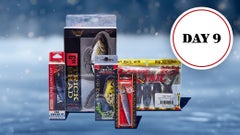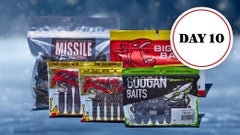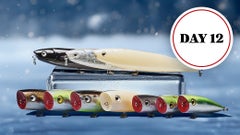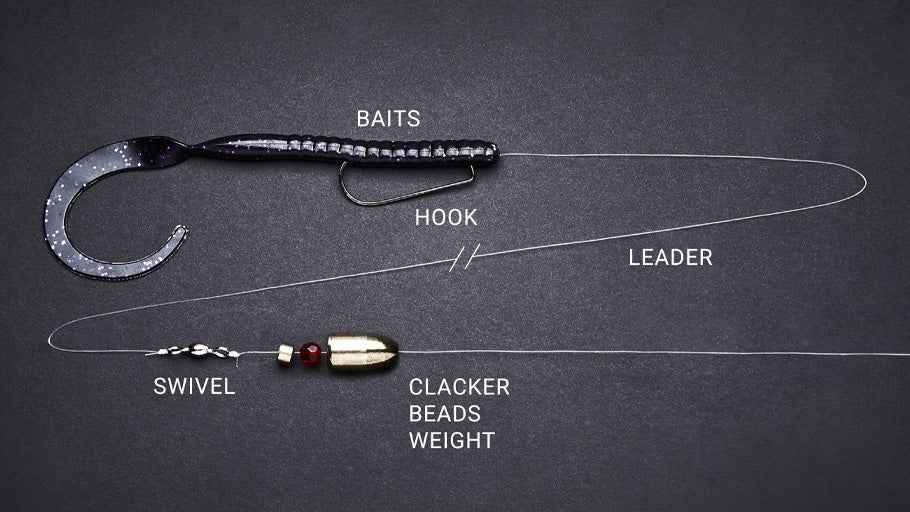
Carolina Rig Gear Guide
A classic technique responsible for giant catches, numbers, and heavy tournament bags, the Carolina rig is deadly all season long but becomes particularly effective when bass seek refuge in deep water. The Carolina rig has the innate ability to maintain excellent bottom contact and feel while giving the attached soft-plastic a much more "free" action as it flutters and glides enticingly behind the rig.
In contrast to moving baits that require predatory fish to chase, the Carolina rig plunges to the depths where it can be worked slowly through the strike zone, making it a great option for tempting lethargic bass. This article will cover all the gear you need to put together the ideal Carolina rig setup, provide an in-depth explanation of how to properly rig one up, and go over some useful tips and tricks to help you become a better Carolina-rig angler.
Carolina Rig Rods
While Carolina rigs can be used at almost any depth, most anglers use them to target pressured fish holding on deep structure, making a longer rod the best choice. Hit the water with a graphite rod in the 7'3" to 7'10" range with a medium-heavy to heavy power rating and fast taper. This blend of attributes provides the sensitivity to feel subtle bites, the quick-loading action for rapid hook penetration, and the length to cast far and set the hook from a great distance. Conveniently, many light-duty flipping sticks or jig rods offer the sensitivity and power needed for properly fishing a Carolina rig.
Carolina Rig Reels
Due to the long casts and heavier line often used when fishing a Carolina rig, a 200-size casting reel equipped with a smooth drag is a great place to start. A faster reel with at least a 7:1 gear ratio is a big asset, as it helps you to quickly remove slack line before setting the hook while also allowing you to retrieve line faster when it's time for a new cast. Additionally, high-speed gear ratios also make it easier to keep pressure on a fish during the fight, which can really come into play when hooking a fish at the end of a long cast.
Carolina Rig Line
One of the best fishing rigs for dragging through boulders, chunk-rock, gravel, and even cover, the Carolina rig requires line that can withstand abrasion while still remaining covert. Fluorocarbon lines from 15- to 25-lb test are commonly used for both the main line and leader line as they provide near-invisible translucency underwater, low stretch for rock-solid hooksets, and high abrasion resistance for long-lasting performance. Alternatively, the floating attributes of monofilament line can help your bait hover naturally, so some anglers prefer mono leaders over fluorocarbon.
Modifications & Rigging
The Carolina rig is relatively simple to set up, but the modification possibilities are endless and will vary based on how deep you intend on fishing, the clarity of the water, and the type of cover that is present. Start by sliding your Carolina weight down your main line, thread on a bead to add sound and protect the knot against damage, and tie on a premium barrel swivel to help prevent line twists. Next, attach your leader to the opposite end of the swivel, tie on your favorite EWG or worm hook, and complete the rig by Tex-posing your soft plastic of choice.
Check out our video "How To Rig a Carolina Rig" for an in-depth look at the rigging process:
As you become more comfortable fishing a Carolina rig, try experimenting with different variations to optimize efficiency and attraction. Utilize different shapes and sizes of weights, try switching between glass or plastic beads, adjust your leader length, and use various trailers like craws, worms, creatures, or even fluke-style baits. In clear or warm-water situations, leader lengths as long as 3- to 6-feet may be needed to tempt easily spooked fish, as opposed to dirty and cold-water applications where shorter leaders from 8- to 24-inches may be better for keeping the bait closer to the bottom and closer to the noise of the weight. Barrel or egg-shaped sinkers are most commonly used, but if you are fishing areas choked with brush or submerged vegetation, the tapered shape of a bullet weight will help the rig slip through cover with fewer hangups.
Tips & Tricks
In order to get solid hook penetration when fishing with Carolina rigs, you'll need to exercise some patience when you get a bite. Before you deliver a big sweeping hookset, try to give the fish some time to fully eat the bait so you don't pull it away too quickly. A lot of power is needed for a positive hookset when using the Carolina rig, so a laser-sharp hook made from wire that's not overly thick helps increase penetration while also slowing down the bait's sink rate.
While a large heavy-wire hook may impair the action of your bait on a Carolina rig, small light-wire hooks are more likely to bend out, so just be mindful of both scenarios when selecting your hook. If bites are coming few and far between, it may be time to adopt a finesse approach and downsize your tackle and bait. Don't be afraid to pull out a spinning rod, arm it with a 1/4-oz weight, 8-lb leader, and use your most productive finesse plastic to put some of those lock-jawed fish into your livewell.
Colors
Seasonal factors, water clarity, and local forage will invariably play a role in dictating your color choice, but proven colorways like green pumpkin, browns, purples, or shad patterns are always a good starting point. When fishing deep or heavily stained waters, don't ignore the darker color schemes as they provide the contrast needed for a fish to identify your lure as prey. Lastly, every angler should have dipping dye or a colored scent marker on deck in case you need to tip the appendages of your soft baits to boost attraction in extremely dirty water.
Innovations in fishing tackle and modern rigging methods have made it easy for anglers to overlook the power of the Carolina rig, but the old-school "ball and chain" still gets it done and deserves a place in every angler's arsenal for its flat-out fish catching ability. A great option when the fishing gets tough the next time you're on the water, consider going finesse with a Carolina rig instead of reaching for your shakey head or jig rod!
Related Content


